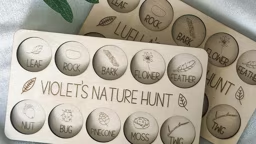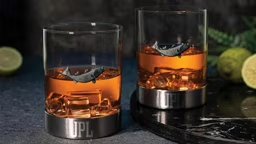
Sophie Brady, age nine, views leeches like she does mosquitoes and black flies – annoying summer creatures that just want to eat blood. So, she’s practical and experienced. She swims and fishes in northern Minnesota lakes, which is how she became a veteran leech wrangler.
“I got a really big guy when I was seven,” she says about her most memorable leech. “It was in my swimsuit, so that was gross.”
Sophie has advice: “First, don’t sit on rocks in the shallow areas, and don’t just stand there, even with water shoes on. They’re muddy, bloody creatures. Mostly, just be brave and carry salt!”
You probably have a leech story of your own – encounters tend to be part slapstick, part terrifying, and usually memorable. On the other hand, if you’re an angler, you may have a white Styrofoam container of leeches in the refrigerator, waiting for a morning fishing trip.
Leeches are a fact of life in cabin country.
Leechy Facts
So far, we know of nearly 700 species of leeches, most of which are northern hemisphere inhabitants that prefer still or slowly flowing freshwater. Some eat organic debris, while others are parasitic. Very few, happily, are interested in sucking human blood. Remember Humphrey Bogart in “African Queen?” The biggest leech, an 18-inch Amazon rainforest giant, is the stuff of nightmares.
Each leech contains 38 segments, 10 eyes, six hearts, 10 pouches for storing blood, 32 brains and 200 enzymes to keep blood viscous for the three months it takes to digest a meal. They typically have two or three rows of teeth so tiny that you don’t feel them bite. Their saliva contains an anticoagulant agent, hirudin, that keeps the blood flowing.
Leeches have a long and storied connection with humans. Ancient records mention leeches being used in India 5,000 years ago. Egyptian pharaohs’ tombs contained pictures of leeches. Victorian England was especially fond of leeches. Records from 1863 show that seven million leeches were brought into London that year to treat – among other things – mental illness, gout, tumors and skin diseases.
Strangely enough, your medical insurance may pay for leech treatments, also known as hirudotherapy. Surgeons may apply leeches to areas of venous congestion in delicate plastic surgery situations, letting leeches remove blood that pools in affected tissues. Along with maggots, leeches (specifically Hirudo medicinalis) were approved as medical devices in 2004.
Walleyes are quite interested in leeches. Their favorite is Erpobdella obscura, a freshwater ribbon species, dark and thick and relatively easy to trap. In every good bait shop is a bubbling galvanized tank full of leeches, often stocked by locals who harvest with state-issued licenses. Anglers pay respectable prices for a dozen leeches, feeding local economies.
Cabin Skills
Should you find an unwanted blood-eating parasite attached to your foot, remember that removal is simple stuff. Don’t pull on the stretchy creature. Instead, use your fingernail to break the seal of the attached leech – just pry it right off. They let go easily.
Alternatively, if you follow Sophie’s advice and carry salt packets, apply your supply directly to the leech, which will cause it to fall off immediately. Bleeding can occur for some time – that anticoagulant will still be working.
“Even if you get a leech, it’s not like you’re going to die,” Sophie said wisely. “They’re disgusting blood-sucking vampires, but don’t worry. It doesn’t hurt.”










